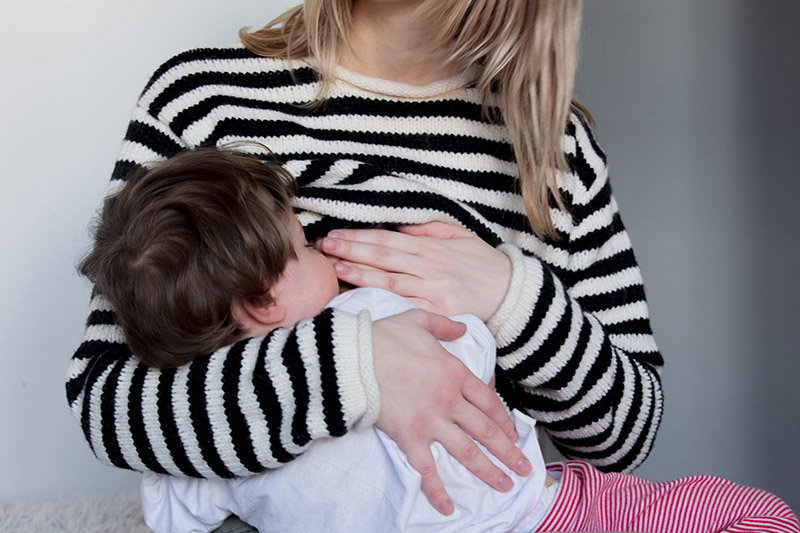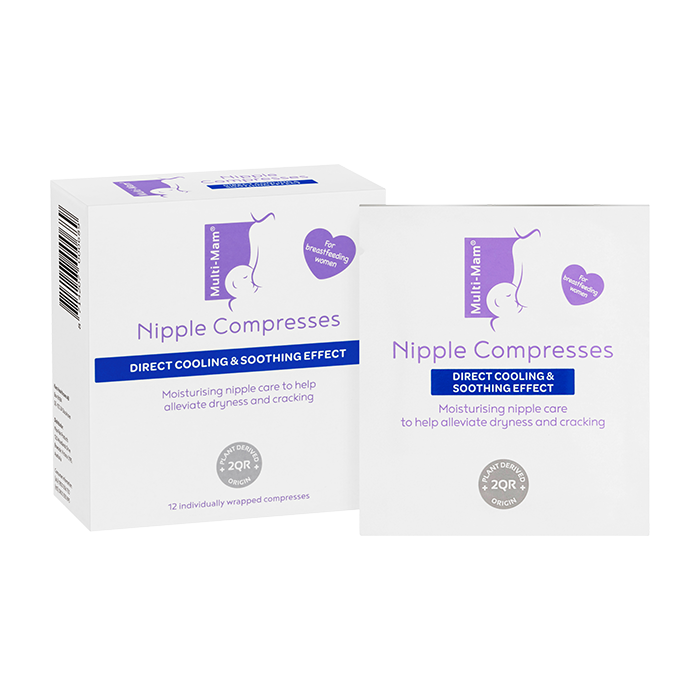Dry Nipples
Dry nipples can cause itching, discomfort, and pain. Though irritating and uncomfortable, dry nipples are usually harmless and can be treated with simple at-home measures. Pregnant and breastfeeding women will typically experience dry nipples more commonly than other groups.
When your areola is dry and itchy, the causes are often harmless and temporary. Chapped nipple causes can range from chafing all the way to hormonal changes and can usually be prevented or treated right at home.
By understanding the difference and what to watch out for, you can easily treat, prevent, or know when to seek out professional help for your dry and sore nipples.
Dry nipple causes
In most cases, a dry and itchy breast is nothing to worry about. There are many common causes of a dry areola, and knowing the causes can help you prevent or easily treat your dry and peeling nipple.
Breastfeeding
Around 80 to 90% of women will experience dry, chapped, itchy, or sore nipples while breastfeeding. Infants can suckle very aggressively, resulting in soreness and chafing in the nipples. Breastfeeding also increases the risk of yeast infection, which can be passed back and forth between you and your infant.

Pregnancy
Pregnancy commonly causes dry nipples due to hormonal changes. Your nipples may be dry, tender or sore. The main cause of soreness or dryness in your nipples during pregnancy is typically due to changes in oestrogen and progesterone levels. Your breasts may get bigger as well, resulting in pain and soreness throughout your breast. These are all normal symptoms as your body prepares for breastfeeding.
Hormone Changes
Hormonal changes can also affect the breast and nipples, particularly changes in the levels of oestrogen and progesterone.
A few examples of what can impact your hormone levels include:
- Medication
- Menstrual cycle
- Pregnancy
- Breastfeeding
Hormones can cause nipple dryness and itchiness. In most cases, the symptoms will go away on their own once your hormones level out.
ple and an increase in itchiness and sensitivity.
Yeast infections
Yeast infections can occur in the nipples. It is more common in females than in males, but both sexes can experience yeast infections in the nipples. Yeast infections or thrush is caused by a fungus called Candida albicans.
There are several reasons why yeast infections or thrush can occur in the nipples.
- You have had issues with dry nipples in the past.
- Your nipples have cracked or bled
- You recently used or are currently on antibiotics
- You are breastfeeding
Dry irritated nipples are not the only symptom of thrush in the nipples. You may also experience:
- Burning, itchiness, stinging, or tender nipples, especially after breastfeeding
- Dry, flaky nipple skin
- A skin rash on the nipple or breast
- Flushed areola or nipple
- Cracked nipples
- Shooting pain
- Shiny skin around the nipple
The fungus that causes thrush or yeast infections thrives in warm, damp environments. Changing your shirt or bra regularly to ensure your breasts remain cool and dry is a simple preventative measure to reduce the risk of developing a yeast infection in your breast. Breastfeeding women, in particular, are at a higher risk and should aim to change bras or shirts more often.
Chafing
One of the primary causes of very dry nipples is chafing. As nipples are very sensitive, excess rubbing against clothes or other objects can cause irritation. This irritation can result in the skin becoming dry, cracked, or itchy. In extreme cases, chafing can even cause the nipples and skin surrounding the areola to bleed.
Chafing is also typically worse during the winter months. Cold weather can make all skin more prone to dryness, and the nipples are no exception.
Contact dermatitis
Contact dermatitis is a mild allergic reaction that occurs when a foreign substance comes in contact with your skin. You may only be sensitive in certain areas and sensitive to certain substances or objects. You can experience contact dermatitis anywhere, nipples included.
Contact dermatitis can be caused by:
- Perfumes
- Ointments
- Detergents
- Soaps
- Synthetic textiles
- Chlorine from a pool
Contact dermatitis can result in several symptoms. On top of a dry, flaky, itchy areola, you may also experience flushing or swelling and even pain or discomfort.
Eczema
Atopic dermatitis (AD) is the most common eczema condition, and it can affect the nipples. Atopic dermatitis affects up to 2.4% of the population worldwide. While eczema typically affects the hands and arms, it can occur anywhere on the body, including nipples. Eczema can result in dry, flaky skin around the nipple and an increase in itchiness and sensitivity.
How to prevent nipples from drying out
Prevention is the best way to avoid dry nipples, particularly if you have sensitive skin or are breastfeeding. A few of the ways that you can work to prevent dry cracked nipples include:
- Keep nipples cool and dry by changing shirts or bras regularly, especially when they become damp (for example, in summer or after a workout).
- Keep nipples hydrated and protected with nipple cream like Multi-Mam Balsam Protect when the air is dry or cold to avoid dryness and cracking.
- Avoid wearing shirts or support that rub against the nipples when exercising.
- Identify substances you are allergic to and avoid the allergen. For example, change your detergent.
How to treat dry, chaffed, or sore nipples
Aside from avoiding irritants and working to prevent nipple dryness, you can also use Multi-Mam Balsam Protect, which works to soothe and protect sore and dry nipples, or Multi-Mam Compresses, which work to treat sore nipples and speed up healing.
Avoid irritating the dry flaky skin around the nipple as this can prolong the soreness and can worsen the symptoms you experience.
Other treatments that can help stop or reduce dryness and irritation in the nipples include:
- Using fresh breast milk to soothe nipples and keep away bacterial infections.
- Use a warm compress to soothe dry nipples.
- Mix ½ teaspoon of salt with 250ml of water and soak your nipples. Always use a fresh solution for each soak.
- Use a lanolin oinment or colloidal oatmeal treatment to reduce dryness.
- Stay hydrated to reduce skin dryness.
- Use a nipple protector or find a bra that does not chafe
Dry Nipples FAQ
Why do my nipples seem dry?
Nipples are sensitive areas of the body that can easily dry out for a variety of reasons. Cold weather, chafing, hormonal changes, yeast infections, contact dermatitis, pregnancy and breastfeeding are all reasons why your nipples may seem dry. Most reasons for dry nipples are harmless and can be treated with a product such as Multi-Mam Balsam Protect.
How do you fix dry nipples?
You need to first remove any irritants that are causing dryness or itchiness in your nipples. The next step will be to protect and prevent further irritation. This can be done by using nipple compresses or moisturisers. Try to avoid further irritating your nipples while they heal, as this can worsen or prolong irritation.
Are you supposed to moisturise your nipples?
Moisturising your nipples can help prevent dryness, itchiness, and soreness in nipples, especially if you are prone to dry, itchy nipples or you find your skin dries out often or during the winters. You can often use breastmilk to moisturise and soothe your nipples when breastfeeding. However, if you continue to experience dryness and chafing, you will want to use a nipple balm or compress that is designed for breastfeeding mothers.
Is it normal to get dry nipples?
Nipples may appear dry or crusty for a variety of reasons. Dryness may be due to external factors such as breastfeeding, pregnancy, Hormonal changes, eczema, yeast infection, cold temperatures or chafing can also cause dry nipples.
Why are my nipples crusty?
Nipples can become crusty for a variety of reasons. Breastfeeding, pregnancy, Hormonal changes, eczema, yeast infection, cold temperatures or chafing can all cause nipple discharge which dries and crusts. Healing your nipple and preventing further irritation can help stop crusty nipple discharge.
Links & Sources
- https://www.ncbi.nlm.nih.gov/pmc/articles/PMC6168189/
- https://acsjournals.onlinelibrary.wiley.com/doi/abs/10.1002/1097-0142(197009)26:3%3C680::AID-CNCR2820260329%3E3.0.CO;2-P
- https://breastfeedingclinic.com/wp-content/uploads/2021/05/Breastfeeding-and-sore-nipples.pdf
- https://journals.sagepub.com/doi/abs/10.1177/089033449300900318?journalCode=jhla
- https://connect.springerpub.com/content/sgrcl/4/3/106.abstract
- https://www.ncbi.nlm.nih.gov/pmc/articles/PMC6168189/








